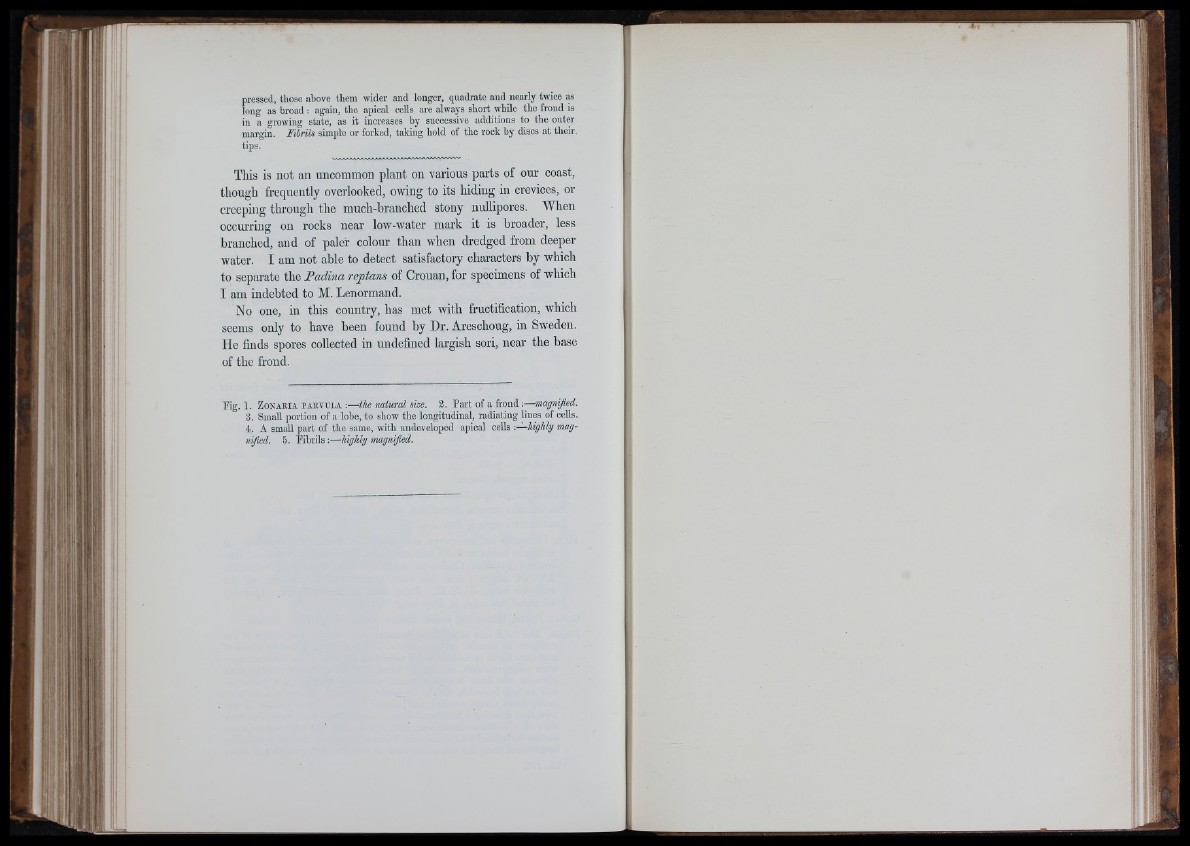
pressed, those above them wider and longer, quadrate and nearly twice as
long as broad : again, the apical cells are always short while the frond is
in a growing state, as it increases by successive additions to the outer
margin. TihriU simple or forked, taking hold of the rock by discs at their,
tips.
This is not an uncommon piant on various parts of our coast,
though frequentiy overiooked, owing to its hiding in crevices, or
creeping through the much-branched stony uuiiipores. When
occm-ring on rocks near iow-water mark it is broader, iess
branched, and of paier coiour than when dredged from deeper
water. I am not abie to detect satisfactory characters by which
to separate the Padina reptans of Crouan, for specimens of which
I am indebted to M. Lenormand.
No one, in this country, has met with fructification, which
seems oniy to have been found by Dr. Areschoug, in Sweden.
He finds spores coiiected in undefined iargish sori, near the base
of the frond.
Kg. 1. Zonaria parvula :■—the natural size. 3. Part of a frond ;— mag
3. Small ])ortion of a lobe, to show the longitudinal, radiating lines of cells.
4. A small part of the same, with undeveloped apical cells -.— highly magnified.
5. Fibrils:—h'